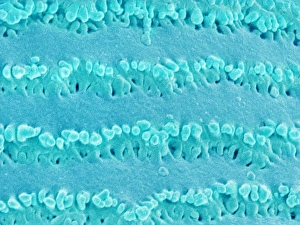Crystallin Collection
"Unlocking the Secrets of Crystallin
All Professionally Made to Order for Quick Shipping
"Unlocking the Secrets of Crystallin: Exploring the Intricate World of Eye Lens Proteins" Captivating images captured through Scanning Electron Microscopy (SEM) reveal the mesmerizing beauty hidden within our eye lenses. These intricate structures are composed of various crystallin proteins, such as F006/9758, F006/9695, F006/9657, F006/9652, F006/9444, F006/9367, and C015/5153. Delving into the molecular realm, researchers have unraveled the unique characteristics of these eye lens protein molecules. Each variant holds its own distinct properties and plays a crucial role in maintaining crystal-clear vision. From rabbits to shrews and beyond, these proteins exhibit remarkable diversity across species. The lens fiber of an eye acts as a scaffold for these crystallin proteins to assemble themselves meticulously. Their precise arrangement ensures optimal transparency and light refraction necessary for sharp visual perception. Intriguingly, SEM imaging also allows us to observe the fascinating architecture of eye lens cells. These specialized cells work tirelessly behind-the-scenes to maintain clarity by continuously producing and organizing crystallin proteins. As we delve deeper into understanding crystallin's complex nature, we uncover invaluable insights that may pave the way for advancements in ophthalmology. By deciphering their roles in preventing cataracts or age-related vision impairments like presbyopia or macular degeneration, scientists strive towards enhancing ocular health worldwide. Crystallin serves as a captivating window into one of nature's most remarkable creations – our eyesight. Through cutting-edge technology and relentless scientific exploration, we inch closer towards comprehending this enigmatic world within our very own eyes.












